If you want to achieve the best lawn results, it’s important that you’re following a proper lawn care calendar. We know that lawn care can be pretty involved and you might not know “what to do or when to do it.” But that’s why we’ve put together this helpful lawn care schedule for Ohio homeowners.
Figuring out what tasks to perform for your lawn shouldn’t feel so elusive.
Your Handy Ohio Lawn Care Schedule
Paying attention to important lawn care tasks throughout the year will help set you up for success. Skip ahead to any of these months, depending upon what time of year you are reading this Ohio lawn care schedule.
Table of Contents
- Lawn Care in March & April
- Lawn Care in May & June
- Lawn Care in July & August
- Lawn Care in September & October
- Lawn Care in January & February
- Choosing Professional Lawn Care Services
Ohio Lawn Care in March and April
This might seem like an odd place to start a calendar, but this is when spring lawn care in Ohio begins. The official start to the lawn care season is early spring and there are some important lawn care treatments and tasks that should be performed at this time. As the ground warms up, grass will come out of dormancy and you’ll need to start taking care of your lawn.
Dealing with Ohio Lawn Weeds in the Early Spring
One of the critical tasks to take care of in the early spring is getting your crabgrass pre-emergent down. Crabgrass pre-emergent (sometimes referred to as “crabgrass preventer”) works by forming a thin barrier near the surface of the soil which intercepts germinating grass seeds.
When the germinating seed comes into contact with the product, it stops growing. This prevents the majority of crabgrass from growing in the first place.
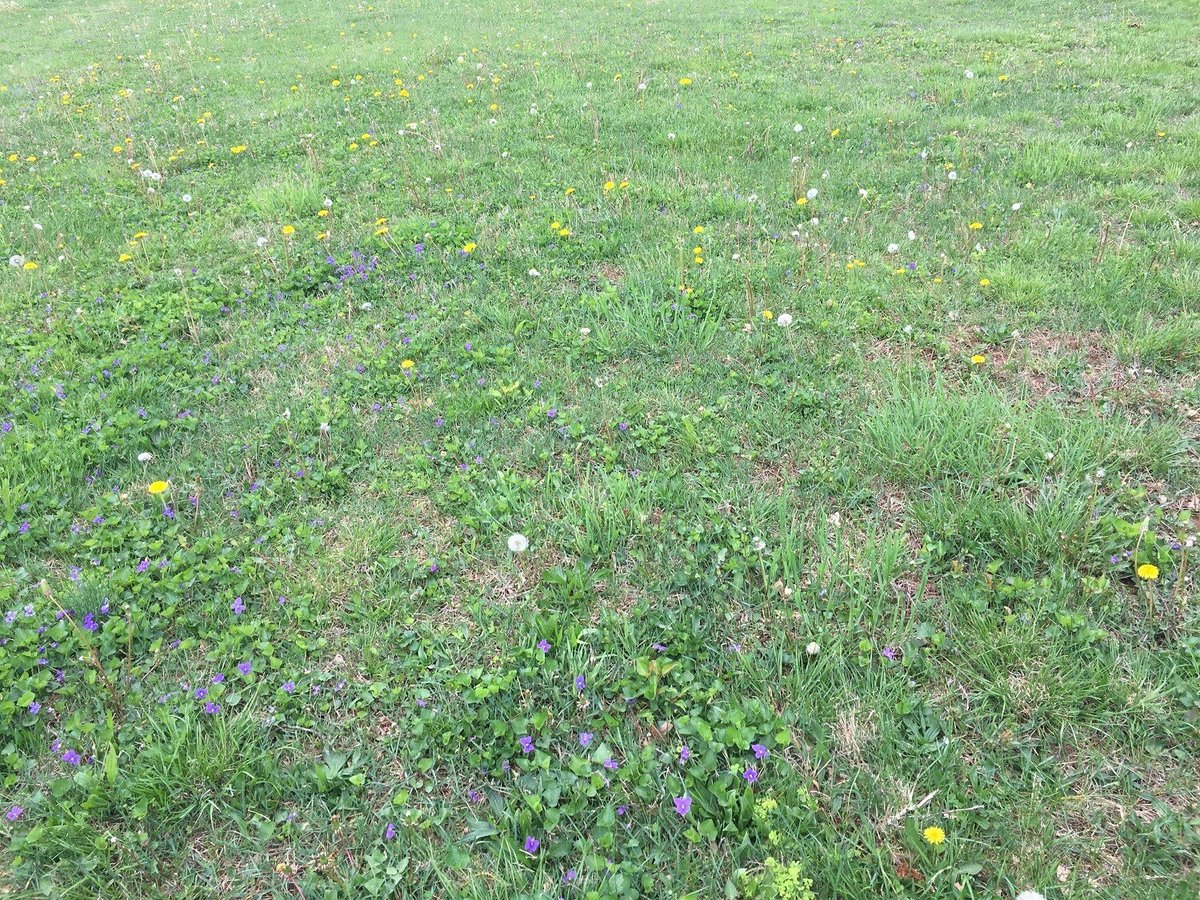
The timing of an application of crabgrass pre-emergent is based upon soil temperature. It’s critical that this product is applied prior to germination, or else it’s not going to be effective. Crabgrass germinates when soil temperatures reach approximately 55 degrees. This usually occurs in mid-April, though it can potentially be as early as March.
If you wait too long to apply crabgrass pre-emergent and most of it has already germinated, it will be too late to make a significant difference. At that point, you’d need to switch to a post-emergent control.
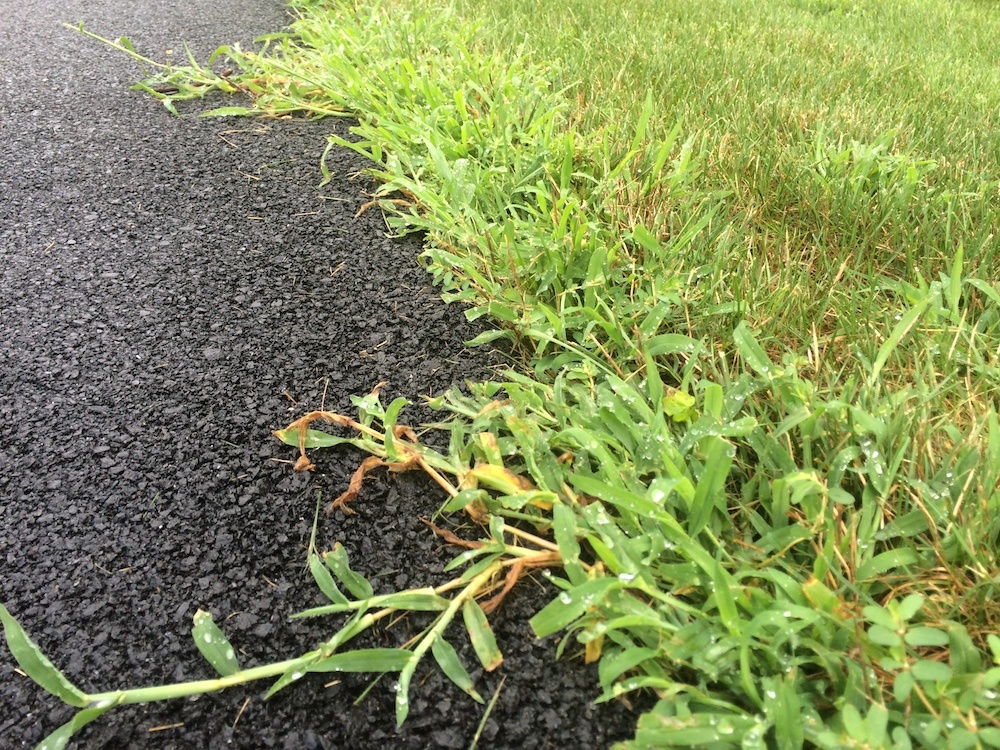
Of course, crabgrass is not the only spring weed that we deal with. Your lawn weed control approach should also include broadleaf weed control.
We begin treating broadleaf weeds as early as we can. The specific start time varies from year to year based on soil temperature, although we try to start in mid- to late-March, and we continue to address these weeds until late fall. In addition, there may be some winter annuals which have invaded the lawn--as soon as it’s warm enough for good control, we start spraying.
Improve Lawn Soil in Early Spring
It’s important to think about how you can improve lawn soil no matter what the time of the year. Soil health is at the heart of a great lawn. While a lot of people are focused on the visible part of their lawn, above the surface, the real secret to a healthy lawn lies underground. It is the quality of the soil that determines the health of the entire lawn.
When you’re just getting started with a lawn care program, it could be beneficial to have lawn soil testing performed. Although it’s not always necessary to test lawn soil, it can give you a good starting point or help you to diagnose certain problems.
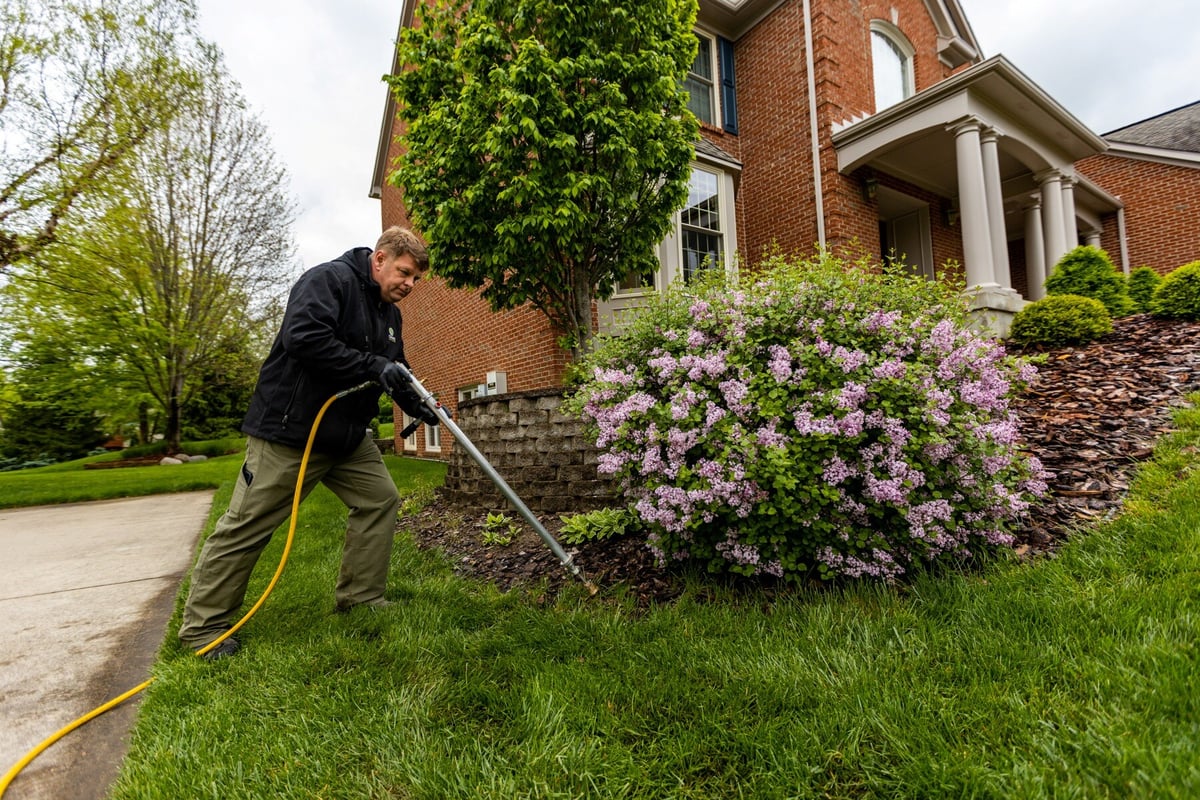
You should know that naturally healthy soil is full of beneficial microorganisms like fungi and bacteria, which help a plant to digest nutrients. These microorganisms also help strengthen your lawn against disease and pests. Healthy, biologically active soil has a highly diverse array of this microscopic life.
One way to give the soil what it needs is through lawn fertilization, which provides vital nutrients the lawn needs to thrive. Homeowners often want to know an Ohio lawn fertilizer schedule. It should start in the early spring and go through the growing season. But along with the fertilization treatments that your lawn should receive throughout the growing season, micro-biological additives should also be given to improve lawn soil.
Mowing Your Lawn in Early Spring
As the lawn begins to grow, you’ll also need to get into your mowing routine. It’s important that you take care to mow properly.
As far as how to mow your lawn, we know that it seems like such a basic task that most people assume they can’t do it wrong. But that’s not the case. In fact, when a lawn starts to look yellowish or has weed breakthrough, a lot of times these problems can be traced back to improper mowing habits.
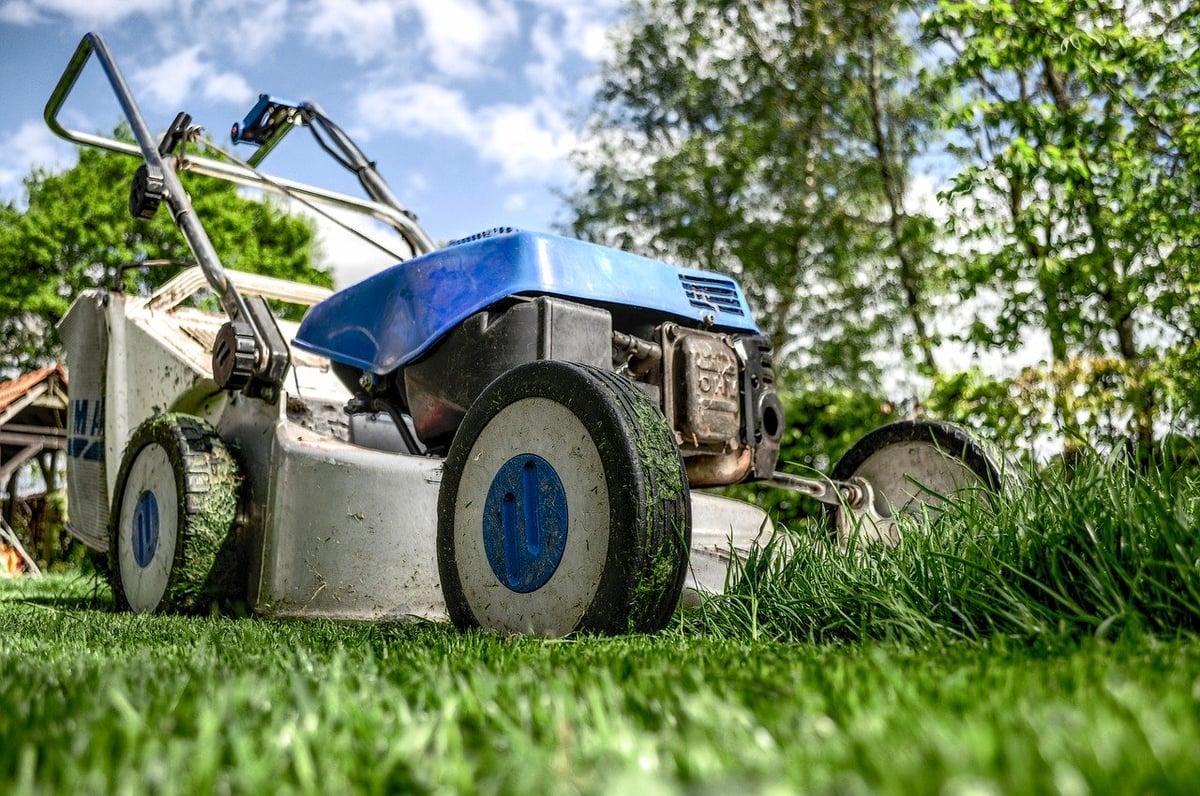
We recommend a mowing height of at least 3.5 inches, but the taller the turf, the better when it comes to choking out weeds. A lawn that is mowed too short will also be more prone to yellowing as the grass struggles to recover from such a drastic cut.
Along with cut height, you should also pay attention to the condition of your mowing equipment. You want to mow with sharp blades and a level mowing deck. When you don’t, you put unnecessary stress on your lawn.
In terms of our Ohio lawn care calendar, you’ll mow your lawn throughout the growing season, typically ending in the mid- to late-fall. We advise mowing weekly so that you never have to make such a drastic cut that it harms the stress of your lawn.
Lawn Care in May and June (Late Spring and Early Summer)
Important Ohio lawn care tasks continue into the late spring and the early summer.
You’ll need to continue to address lawn weeds, fertilization, and mowing. Watering your lawn should also be on your radar as the more frequent rain showers of the spring turn into periods of drought in the summer.
Late Spring and Early Summer Lawn Weed Control
As far as lawn weeds in Ohio, they are highly active in the late spring and early summer.
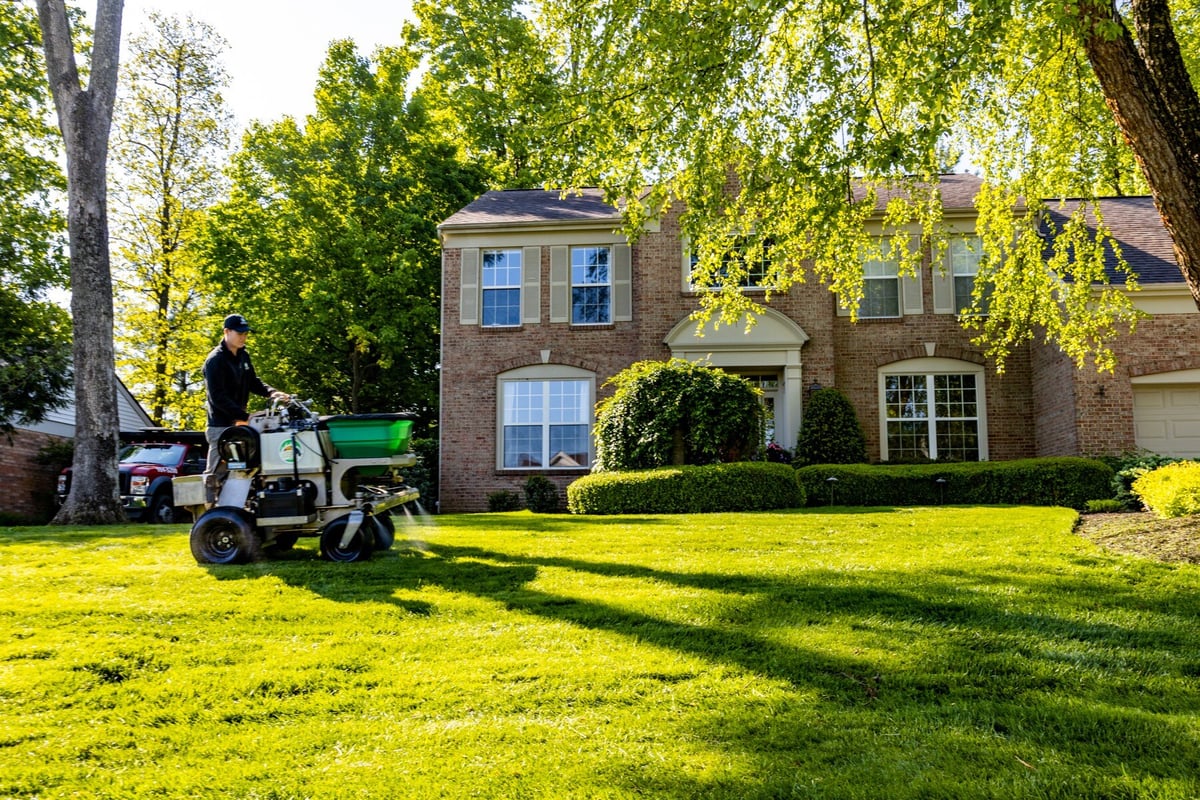
In the late spring, you’ll need a crabgrass control booster and any breakthrough should be addressed. If you happened to miss that window for preventative control, you may require more post-emergent control at this time.
Broadleaf weed control is also important for any spring or summer weeds.
Watering Your Lawn
Lawns need one to two inches of consistent water per week. During certain times of the year, Mother Nature may provide enough rainfall to keep your grass growing. However, it’s common to have dry spells for several weeks or more in Ohio. As rain showers become less frequent, you might need to think about lawn watering more regularly.
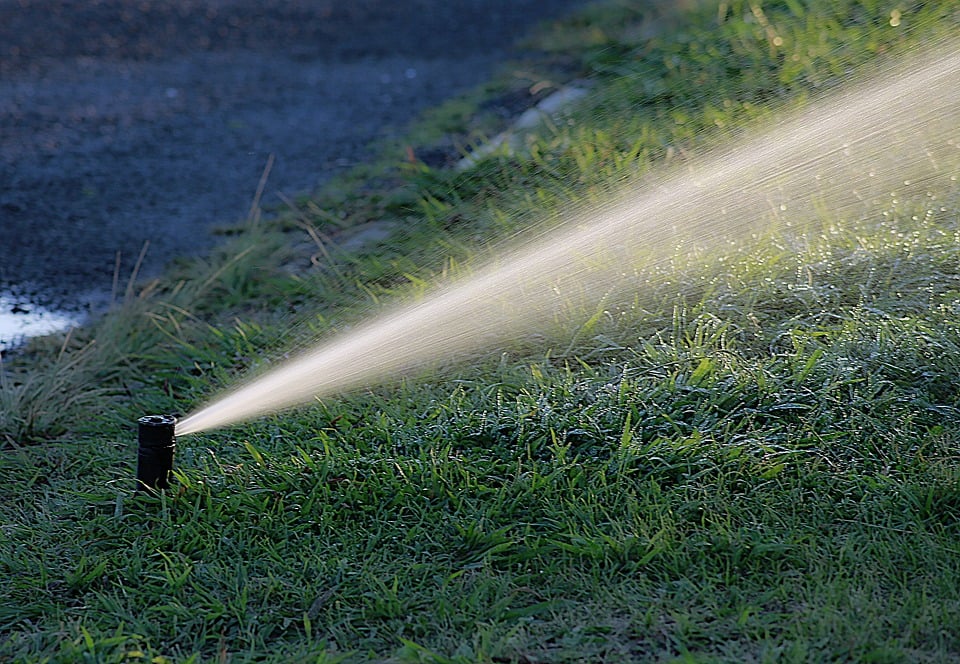
When lawns aren’t getting enough water, you’ll often notice the following symptoms:
- The color changes from a vibrant green to a much duller blue-green (and later, brown).
- After walking across your lawn, you can clearly see footprints in the grass that won’t stand back up.
As far as when to water your lawn, morning is by far the best time to water your lawn because it gives your grass plenty of time to dry before nightfall and to absorb as much water as possible before it evaporates. This is especially important when night temperatures are over 70 degrees and day temperatures are above 85 degrees.
Instead of watering daily, stick to watering your lawn 1 to 2 times per week if Mother Nature isn’t providing steady, soaking rains. Deep and less frequent watering is best. Watering 1 to 2 times per week often provides Ohio homeowners with better results and gives your lawn plenty of time to dry between watering, which helps to reduce lawn fungus, something we’ll cover in more depth in our sections on summer lawn care in Ohio.
Lawn Pests in Ohio
In the early summer, lawn grubs in Ohio must be on your radar. That’s because this is the time when preventative grub control can be applied. With preventative treatments, the idea is to prevent grubs from having the opportunity to hatch.
Inevitably, when we talk about lawn grubs in Ohio, moles also tend to come into the conversation. Since grubs are one of the food sources that bring moles into residential lawns, many people want to know does grub control help with moles?
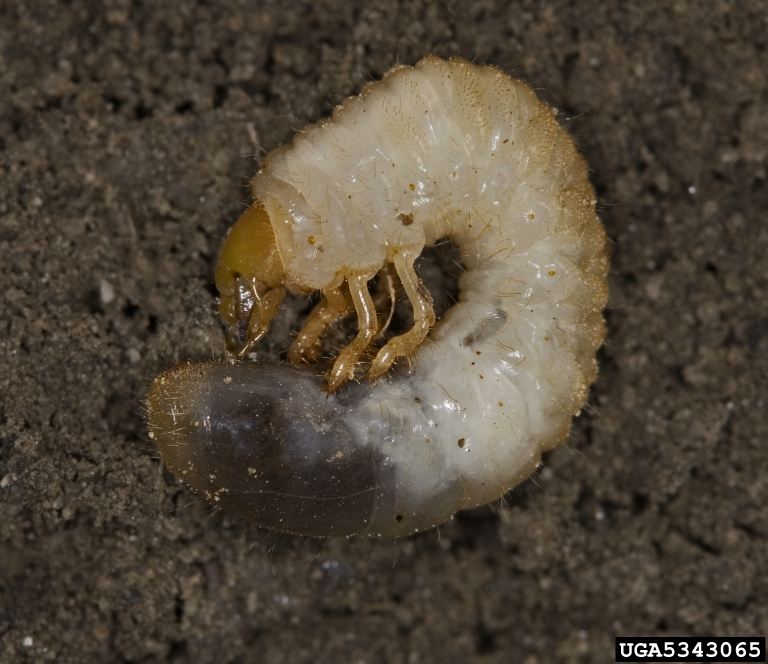
Unfortunately, grub control alone will not prevent moles because they’ll simply switch to a different food source. Grubs also like earthworms and other bugs.
Summer lawn care in Ohio should also be the time to start treating for surface insects like chinch bugs and billbugs.
Lawn Care in July and August (Middle of Summer)
At this point, we are in full-blown summer lawn care in Ohio. Things need to change again as we make adjustments due to the weather and the conditions. You’ll still need to take steps to get rid of weeds in your lawn, but there might be summer weeds to deal with that you didn’t have in the spring.
While fertilization is still important, it’s important not to over-fertilize during the hot summer months, which could burn the grass. You’ll also want to continue to focus on the health of your soil.
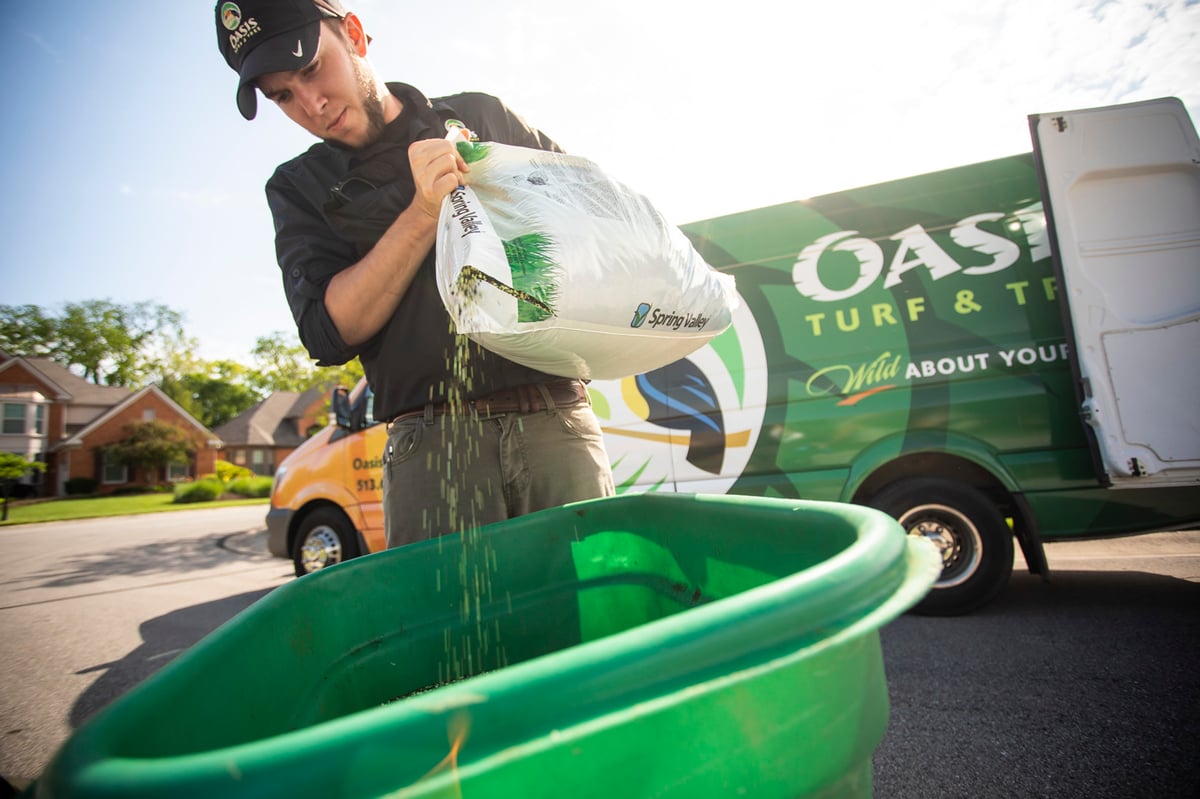
Mowing your lawn will still be a routine task and watering your lawn will become more important than ever, as we have periods of drought.
Lawn insects need to remain on your radar as you’ll want to continue treating for surface-feeding insects and grubs. In addition, lawn disease will especially need to be on your radar during the summer months as the hot and sometimes wet conditions can create a breeding ground for lawn fungus.
Lawn Diseases in Ohio
Lawns are living things made up of millions of microorganisms. Fungus spores exist on every lawn and are usually beneficial to your soil health. But when the conditions are right (hot temperatures and high moisture), spores can begin to multiply and become a problem.
As far as the most common lawn diseases in Ohio, Brown Patch and Dollar Spot occur frequently. They can be hard to tell apart, though Brown Patch tends to be more blotchy and Dollar Spot travels across the entire leaf blade. Both show up as yellow or brown spots on the lawn.
.jpg?width=1200&name=Turf%20Disease%20(1).jpg)
While lawn disease tends to look really bad and cause a lot of panic, the good news is that it very rarely actually kills the lawn. Most of the time, lawns bounce back quickly. This is why when homeowners ask us about lawn disease control, we tell them that lawn fungicide is probably not worth their money.
Lawn fungicides can be as much as three times the cost of a lawn treatment! It’s shockingly high. And it’s not like it’s a one-and-done kind of treatment. You’ll need to continually apply lawn fungicides every three weeks.
Instead, we recommend focusing on good lawn care habits that will help promote a thick and healthy lawn that will better stand up to lawn fungus.
Ohio Lawn Care in September and October (Fall)
As we shift seasons again, some changes to your lawn care tasks must occur. Fall lawn care in Ohio should focus on fall weeds, continued lawn fertilization and biohealth nutrition, continued mowing, and watering your lawn as needed.
One big change with fall lawn care in Ohio, is that this is also the time to focus on lawn aeration and overseeding, two of the most important things that you can do for your lawn.
What is Lawn Aeration?
Aeration is the process of pulling out small soil cores (also known as plugs) to allow water, oxygen and nutrients to penetrate the root zone. Some of the main benefits of aeration include reduced soil compaction, improving root development, thatch reduction, and ultimately improved lawn care results.
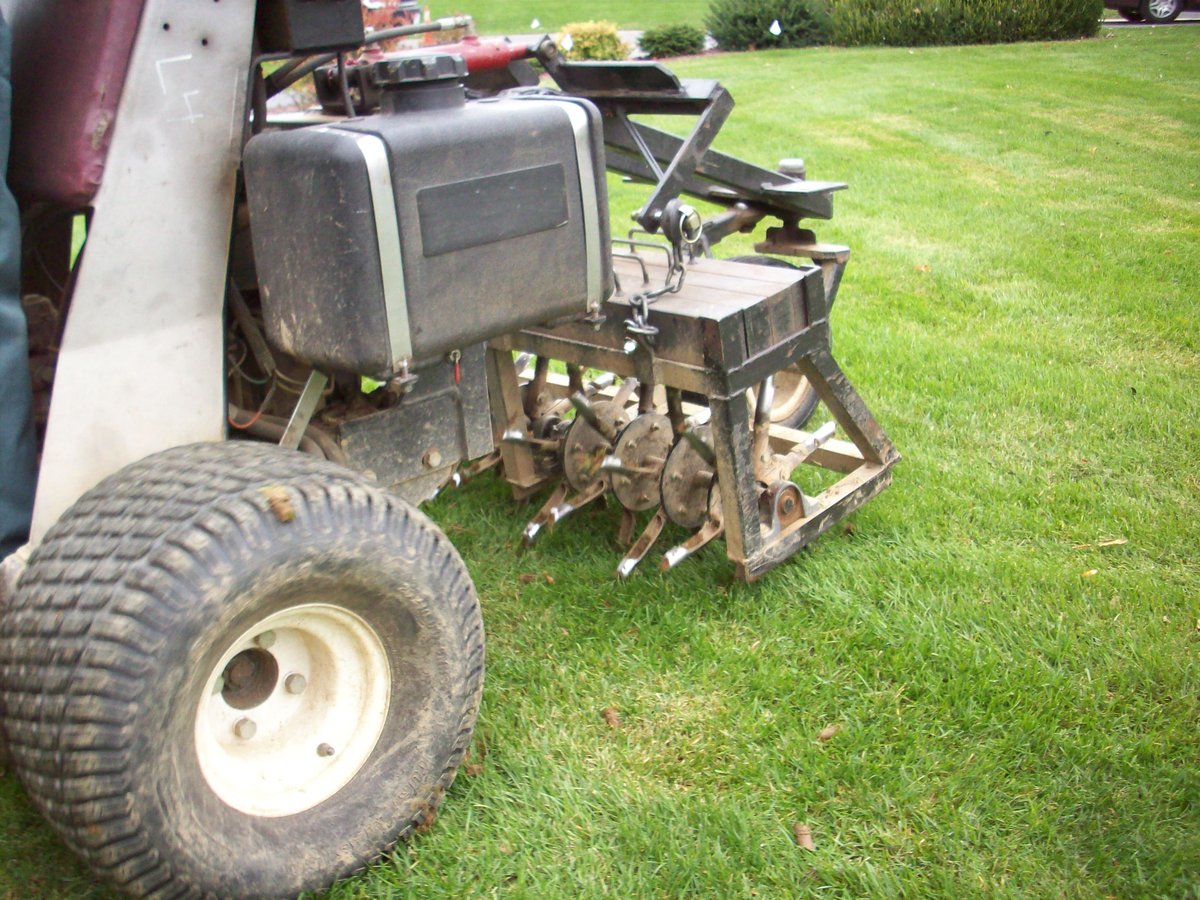
When is the Best Time to Aerate Your Lawn in Ohio?
The best time to aerate your lawn is in the fall, at which time you would also want to have lawn seeding performed. There are a few reasons why we advise seeding in the fall.
For one, the conditions are ideal for germination. The ground is still warm but the air is cooling down. That means your brand-new grass seed won’t get scorched by the spring or summer sun.
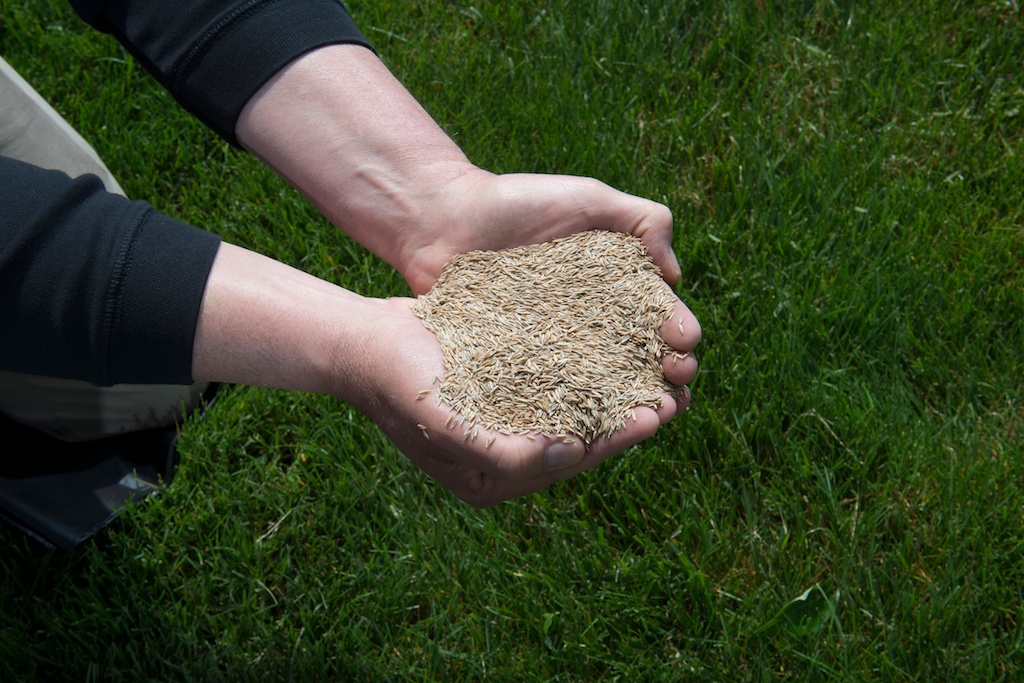
But seeding in the fall also means you can apply crabgrass pre-emergent products in the spring without worrying about killing your new grass. The same products that prevent crabgrass from germinating would also prevent your new grass from germinating.
Lawn Care in November and December (Fall into Winter)
As we begin to transition into late fall and winter lawn care in Ohio, keep in mind that the late fall is still a good time for broadleaf weed control (tackling winter weeds) and continued fertilization and soil health bionutrition.
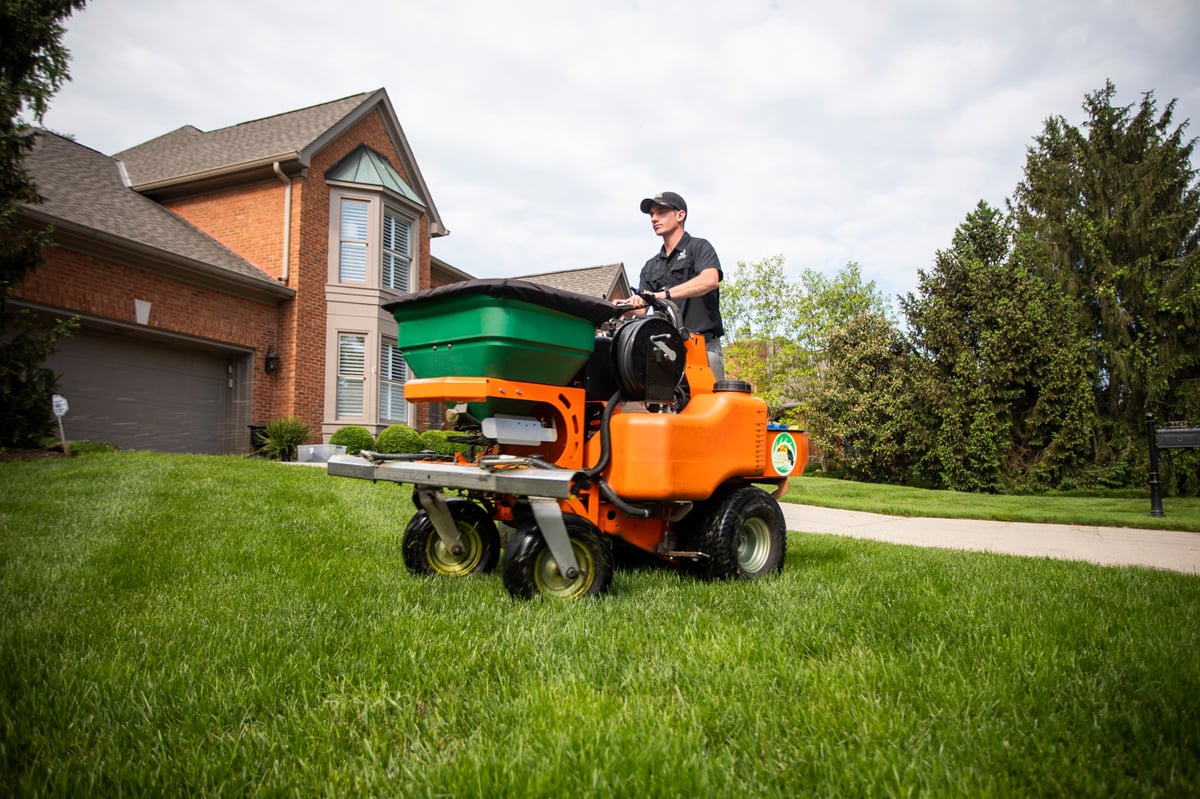
At Oasis Turf & Tree, our lawn care program wraps up around the beginning of December. Lawn winterizer is one of our last services. This late fall fertilizer application sets the foundation for the winter season as well as the next spring.
Lawn Care in January and February (Middle of Winter)
While January might be the start of a new year, it’s the “off season” for lawn care. Grass is dormant during the winter months so there isn’t much to do at this point with winter lawn care in Ohio.
A couple of winter lawn care issues to have on your radar are snow mold and snow plow damage. As with other lawn problems, if you have a thick and healthy lawn, it will stand up to these issues better than one that is already struggling.
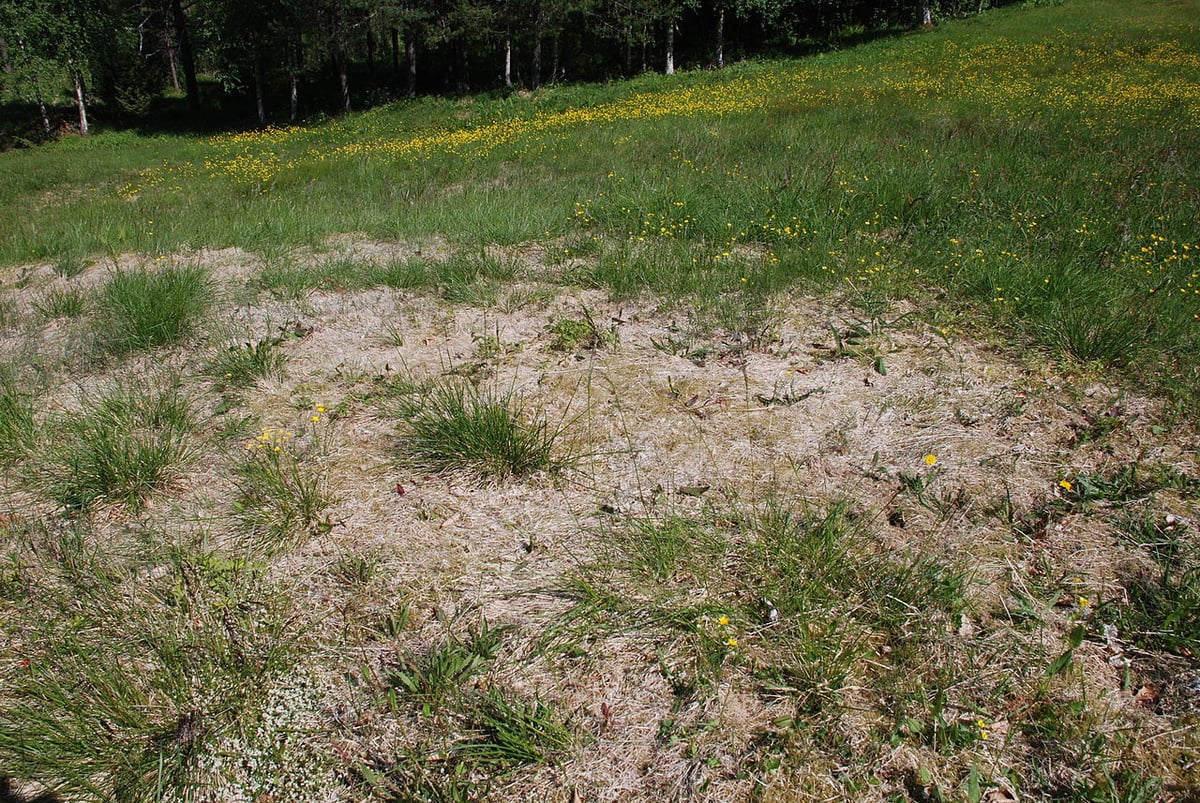
While there might not be much else to do for your lawn during this period, this is a great time to start researching lawn care for the upcoming season (and maybe even decide whether you might want to hire a professional to perform your lawn care in Ohio).
If you are thinking about hiring a lawn care company, keep in mind that seasonal treatments usually start around March, so you shouldn’t hold off on this decision. Getting on a provider’s schedule early is important.
Don’t procrastinate and get stuck in a last-minute scramble. This will also help your company tremendously as it allows them to better prepare for the upcoming season by ordering the proper products and getting you added to the schedule.
Choosing Professional Lawn Care Services
We know that there is a lot to this lawn care calendar. But the good news is that you don’t have to handle it all on your own. You can hire professional lawn care services and hand many of these tasks over to them.
Of course, it’s no secret that there are a lot of lawn care services in Cincinnati, Dayton, OH and Northern Kentucky.
With so many different companies out there making different claims, it might feel challenging to try and separate the good from the bad. Of course, the last thing that you want to do is put in the effort of hiring (and paying for) lawn care services only to learn that you’re not happy with how you chose.
This is why it’s important to research lawn care companies before making this choice. There are plenty of gripes out there about different lawn care companies, but when you do your homework, you can find a company that you feel good about.
One of the first things that people want to know when they hire a lawn care company is how soon will I see results?
In most cases, you’ll likely notice some small changes right away (even after just one treatment), such as weeds beginning to die. But seeing your lawn getting thicker or greener can take a little bit more time, particularly if your lawn wasn’t in the best health, to begin with.
It’s important to have some patience and stick with the program. A great lawn isn’t going to be achieved overnight. But if you trust the process, you’ll begin to see what a difference it can make.
If you’d like to learn more about the lawn care programs that we offer in Dayton, OH, Cincinnati, or Northern Kentucky, request your quote, help us find the right program for you, then sit back and relax knowing you’ve made a wise choice.
Image Source: Snow mold, Grub, Lawn mower, Sprinkler Head

